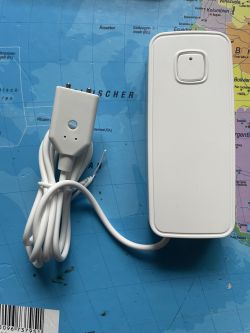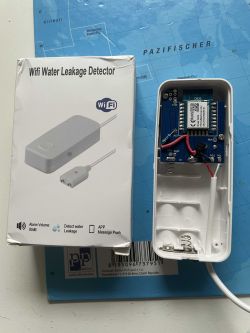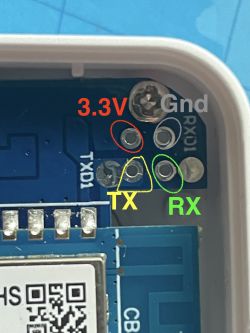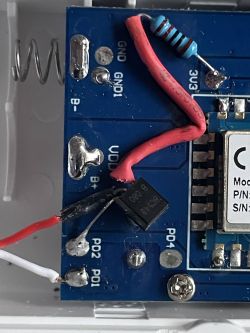Just acquired another WiFi Water Leakage Detector from Aliexpress
https://de.aliexpress.com/item/1005005754072819.html

which is a little different to this one here, but it essentially works the same way.


It is powered with 2 AAA batteries, and as in the previous post, it simply goes to sleep, but does not wake up.
In order to make this work, I followed the same procedure as in the upper post and used a BC548 NPN transistor between 3.3V (+10k resistor), one pin from the sensor to base and the other one to the connector on the board.
Works as expected - goes to sleep, wakes up if you touch the sensor.

The extraction from the flashing tool is incomplete and misses the relay, as the board has also a buzzer on the bottom. In order to use that one, you have to add it as a relay and configure it properly like this:
{
"vendor": "Tuya",
"bDetailed": "0",
"name": "Tuya WiFi Smart Water Leakage Detector (CB3S, no TuyaMCU)",
"model": "unknown",
"chip": "BK7231N",
"board": "CB3S",
"flags": "0",
"keywords": [
"water leakage",
"CB3S",
"Aliexpress"
],
"pins": {
"7": "Rel;0",
"8": "DoorSnsrWSleep_nPup;0",
"14": "BAT_Relay;1",
"23": "BAT_ADC;1",
"24": "Btn;0",
"26": "WiFiLED_n;0"
},
"command": "",
"image": "https://obrazki.elektroda.pl/1396778400_1707649738.jpg",
"wiki": "https://www.elektroda.com/rtvforum/viewtopic.php?p=20955712"
}
I don't know about battery consumption. I do NOT have any custom script, so I will see how long it "survives" without tweaking it.
Cool? Ranking DIY







